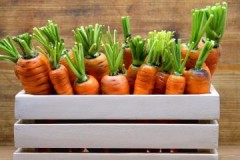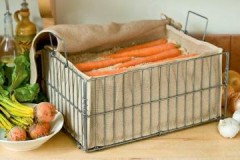Popular ways to store carrots in the cellar
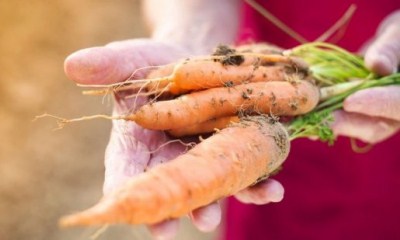 They start harvesting carrots in the fall, and store it until the onset of heat. However, it is possible to prevent spoilage of vegetables only if certain conditions are met.
They start harvesting carrots in the fall, and store it until the onset of heat. However, it is possible to prevent spoilage of vegetables only if certain conditions are met.
It is not enough to lower the carrots into the cellar, you need to properly prepare both the root crops themselves and the room in which they will winter.
About, how to store carrots in the cellar, so as not to lose the harvest, read the article.
Content
Is the subfloor, basement suitable for storage until spring?
A clean and well-ventilated cellar is the best place to store carrots. It has enough space to accommodate the entire crop.
Optimum temperature and humidity
 Carrots will not freeze and germinate if stored at 0 ... + 2 degrees. An increase and decrease in temperature within 1-2 degrees is not critical.
Carrots will not freeze and germinate if stored at 0 ... + 2 degrees. An increase and decrease in temperature within 1-2 degrees is not critical.
It is important not to allow its constant drops. A one-off leap is not a big deal, but regular changes will cause vegetables to rot, sprout, or dry out.
Air humidity should remain within 95%... The root crop is 90% water, so it loses it very quickly under inappropriate conditions.
If it was noticed that vegetables are starting to dry, you need to increase the humidity in the room. A hygrometer is used to measure this indicator. Read more about the temperature storage conditions for carrots. here.
Training
Preparation of carrots for storage should begin in spring, when choosing seeds for planting. About a month before harvesting, you need to start processing the premises... When the cellar is ready, you can pick vegetables that also require some processing.
Read more about preparing carrots. here.
Variety selection
Suitable for storage are late and mid-season varieties that are harvested in the second half of autumn. These root vegetables can stay fresh for 7-10 months.
You need to choose the following seeds for planting:
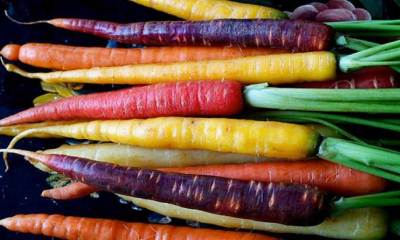 Autumn Queen;
Autumn Queen;- Flaccoro;
- Dolyanka;
- Samson;
- Chance;
- Nantes;
- Vitamin;
- Moscow winter, etc.
You cannot mix different varieties with each other. They must be kept separately. First of all, they consume mid-ripening, and then late-ripening carrots.The best varieties of carrots for storage are described in this article.
How to prepare vegetables correctly?
If a crop that has not been previously prepared is lowered into the cellar, it will quickly deteriorate. To keep the carrots fresh for as long as possible, a number of conditions must be met:
- Proceed to digging carrots needed in dry sunny weather. When extracting root crops from the ground, proceed carefully, trying not to damage them with a shovel.
- The dug carrots are laid out on the garden bed for primary drying. After 2 hours, the remains of the soil are gently shaken off from it, but you do not need to be too zealous.
- Cut off the tops almost under the growth point, leaving a process up to 2 mm long. A sharp knife is used to remove the greenery.
- Vegetables are removed for temporary storage in a warm room, such as a pantry. After 5-7 days, you can assess their condition, sort out rotten and spoiled fruits.
- After completing the preparation, the vegetables can be lowered into the basement.
Premises
Proper preparation of the cellar is the key to the successful storage of carrots. Action plan:
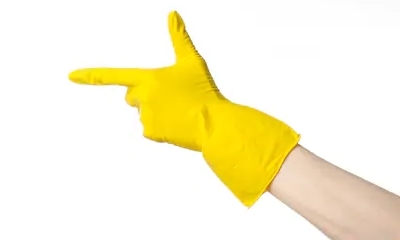 Ventilate the room. For this, the cellar is left open for 7-14 days. There should be no foreign odors in it.
Ventilate the room. For this, the cellar is left open for 7-14 days. There should be no foreign odors in it.- Provide fresh air. This is only possible with well-functioning ventilation.
- Disinfect all surfaces. The walls must be treated with a solution of bleach 2%, which prevents the growth of microorganisms.
- Whitewash the walls. Whitewashing is started 14 days after disinfection. For 1 sq. m. leaves about 0.5 liters of solution.
- Process storage containers. There should be no signs of mold growth. It is recommended to place the boxes in the sun to provide additional drying and disinfection.
Preparatory activities take not a single day. You need to start their implementation in advance, about a month before lowering the crop into the cellar.
What is better?
The good thing about the cellar is that you can store the harvest in it in almost any container. The most popular ways:
- In boxes (plastic or wooden)... The container is filled with any suitable material. It could be sand or dry sawdust, with which vegetables are poured so that they do not come into contact with each other. Shelf life - 7-9 months for sand, up to a year - for sawdust.
- In enamel pans... The integrity of the container is a prerequisite. There should be no chips or rust on it. Vegetables are stuffed into the pan tightly, exposing them in an upright position. When it is full, cover it with a paper towel and close it tightly. Carrots will stay fresh for up to six months without sprinkling.
-
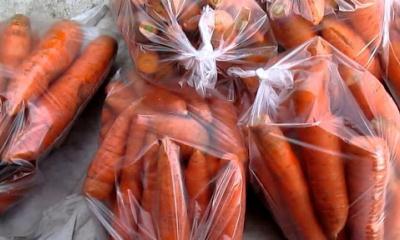 In fabric bags... Sprinkle the roots with any suitable material. You can use onion or garlic hulls to help retain moisture.
In fabric bags... Sprinkle the roots with any suitable material. You can use onion or garlic hulls to help retain moisture.Fill a bag 1/3 with vegetables, tie it and put it in a suitable place. Shelf life - up to six months.
- In plastic bags... This is one of the most popular storage methods, as vegetables do not rot, dry or wither in the film. No more than 5 kg of root vegetables should be placed in 1 bag.
The container is tied, but several holes are first made in it so that condensation does not accumulate inside. During storage, vegetables will emit carbon dioxide, which, in low concentration, helps to maintain their freshness.
If you do not ensure the outflow of air, then the level of carbon dioxide will rise to critical values and the carrots will begin to deteriorate. The bags can be replaced with plastic wrap. The shelf life is about 5 months.
- In paper... Each root vegetable is individually wrapped in clean sheets, without applied typographic or watercolor paint. Store carrots in open boxes.
As a material for pouring root crops, you can use:
- Sand. It should be clayey, not riverine. Before filling, it is slightly moistened.For 1 bucket take 0.5 liters of water.
- Coniferous sawdust.
- Moss.
Subject to all conditions, the carrots will lie in the cellar for six months or more.
How to process?
 Most often, carrots are treated with clay before being sent for storage. This prevents the process of its germination and wilting. There are two uses for clay: pouring and dipping.
Most often, carrots are treated with clay before being sent for storage. This prevents the process of its germination and wilting. There are two uses for clay: pouring and dipping.
For pouring, ½ buckets are filled with clay, which is diluted with water and left for 12 hours.
When the material swells, it is thoroughly mixed, water is added and again left for a day. The procedure is repeated for 2-3 days. The clay must be brought to the consistency of thick sour cream.
The bottom of the boxes in which the vegetable will be laid is covered with foil... Place the root vegetables so that they do not touch each other. From above they are poured with clay. When this layer dries, carrots are again laid on top of it and again poured with clay. The procedure is repeated as many times as necessary.
The second option is dipping carrots in clay. It should be of such density that it does not drain from the root crops. The moistened carrots are dried and placed in boxes. It will not deteriorate, since each instance will be reliably protected by a dried carapace.
Clay is an environmentally friendly material that does not contain impurities harmful to humans.... Its use can increase the shelf life of the crop up to 8-10 months. Vegetables must be thoroughly rinsed and peeled before eating.
Another option is to use paraffin wax. Root vegetables must be dipped into a hot mass. To give them elasticity, you can melt a small amount of beeswax in paraffin.
All of these methods are safe. Substances contained in paraffin, clay and chalk solution do not penetrate into vegetables. Therefore, after washing and peeling, they remain edible.
Best and worst neighbors
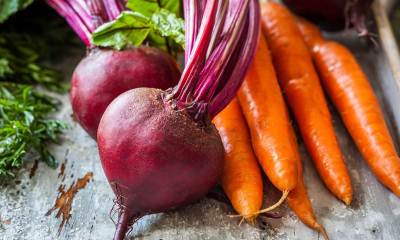 You need to store the carrots in a separate container. It cannot be mixed with other root vegetables. However, there may be vegetables nearby such as:
You need to store the carrots in a separate container. It cannot be mixed with other root vegetables. However, there may be vegetables nearby such as:
- potatoes;
- beet;
- kohlrabi;
- onion;
- Jerusalem artichoke;
- radish.
The worst neighbor of carrots are apples, which secrete substances that contribute to the rapid ripening and spoilage of all vegetables that are located in the immediate vicinity.
You can read about the joint storage of beets and carrots. here and here.
Problems and solutions
Problems that can be encountered when storing carrots and how to fix them:
- Withering. It is necessary to increase the humidity level in the cellar. To do this, you need to take care of proper ventilation. Spraying water with a spray bottle or placing buckets of liquid can be a temporary measure.
- The appearance of mold on the crop... This happens when there is excessive moisture. You can cope with the problem if you put a bag of quicklime in the cellar.
- Rotting. Why do carrots rot? Most likely, a sick vegetable got into the container. In this case, the entire crop must be sorted out, the damaged roots removed and stored again.
Helpful information
Tips for extending the shelf life of vegetables:
- Before harvesting carrots in the cellar, they must not be peeled. Removing the skin will quickly deteriorate.
- You should not completely peel carrots from the ground, and even more so it should not wash.
- The crop must be sorted out regularly, removing spoiled fruits.
- If vegetables are stored in boxes, the height of the fill in them should not exceed 1 m.
Conclusion
Storing carrots in a cellar requires several conditions. Key points to look out for:
- cleanliness in the room,
- maintaining the air temperature within 0 ... + 2 degrees,
- proper preparation of vegetables.
Containers and bulk material can be anything. The harvest is best stored in boxes filled with sand, clay or sawdust.

